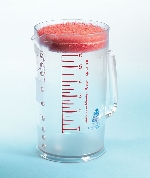Personnel
The water Assessment Toolkit is targeted at an audience with little or no experience in water conservation. The goal of this Toolkit is to make the process of screening for water conservation opportunities more accessible.
The personnel requirements to complete this water Assessment Toolkit include one or more persons with access to the facility that are willing to gather the necessary equipment, enter utility data into the Tool, carry out an assessment of the facility, enter assessment results into the Tool, and review the results of the effort. If you are using a flow meter bag (see below) to measure water volumes, it is helpful to have two people conduct the assessment as this device is hard to handle alone. It is the goal that no technical background in water conservation will be needed to understand the opportunities that might be identified through the assessment.
Time
The amount of time necessary to complete the Assessment Toolkit will vary widely by size and type of facility. However, a basic assessment of most facilities could be completed in just a few hours by sampling representative spaces and extrapolating the results for the whole facility. For example, if an school has five restrooms of similar age and layout, the assessment could be completed for one restroom and the opportunities in other spaces could be estimated based on these results.
Equipment
Some simple equipment will be required to effectively carry out this water conservation assessment.
| Clipboard and writing utensil |  |
||
| Means to measure water volume There are a number of options to measure volume |
 a water bottle with volume graduations |
 a flow meter bag with volume graduations |
 micro-weir |
| Stopwatch |  |
||
| Camera (optional) |
 |
||
